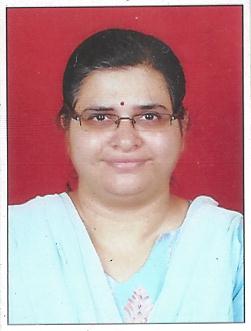Scientific Program
Keynote Session:
Oral Session 1:
- NEW HORIZONS IN THE FIELD OF ORAL AND DENTAL HEALTH
Title: Effects of pre-fed and post fed amoxicillin-clavulanate 625 mg on gastrointestinal motility symptoms.
Biography:
Dr. Anuraag B. Choudhary is an Associate Professor, Department of Oral Medicine & Radiology. He has completed his Case series based research at VSPM Dental College, Nagpur, Maharashtra.
Abstract:
Objective: To investigate effects of pre fed (fasting) and post fed (non- fasting) amoxicillin-clavulanate 625 mg on gastrointestinal motility symptoms.
Study Design: The Amoxicillin clavulanate 625 mg was prescribed to patients to evaluate pre fed and post fed effect on gastrointestinal motility symptoms. This study was a double – blinded Randomized Controlled Trial (RCT) and was carried out on 60 subjects divided into two groups: {1st group – 30 individuals in pre fed (fasting) group and 2nd group – 30 individuals in post fed (post- prandial) group}.
Results: Number of patients who shows gastrointestinal motility symptoms in of both groups were evaluated and compared with each other. Gastrointestinal motility symptoms were found in 5 patients from 1st group (pre fed) and 18 patients from 2nd group (post fed).
Conclusion: This study concluded that gastrointestinal motility symptoms were observed less in patients who were prescribed with pre fed (fasting) Amoxicillin- clavulanate 625 mg than patients who were prescribed with post fed (non-fasting) Amoxicillin-clavulanate 625mg.
Title: Complications associated with I.V Fentanyl in patients undergoing minor oral surgeries.
Biography:
Dr. Jimmy Kayastha, is a Consultant in Oral and Maxillofacial Medicine and Surgery at Dental Health Solutions Inc., San Francisco, California. He served as the Director for Advanced Education in General Dentistry Residency program at the Marshfield Clinic, Wisconsin. He was appointed Adjunct Clinical Faculty at Case Western Reserve University and Miami Valley Hospital, Ohio. He earned his doctorate from Nova Southeastern University, Florida. He completed his General Practice Residency at Miami Valley Hospital and Oral Medicine Residency at Carolinas Medical Center. He then completed a Fellowship from the Cleveland Clinic and Orofacial Pain Fellowship at Walter Reed National Military Medical Center, Maryland and Glasgow Dental Hospital, United Kingdom. He is an internationally recognized speaker has captivated medical and dental professionals worldwide to motivate real change. He has had scientific publications in the Journal American Medical Informatics Association, Journal American Dental Association and Journal of Oral Surgery, Oral Medicine, Oral Pathology, Oral Radiology and Endodontology.
Abstract:
Anxiety control remains an important concern in dental practice. We evaluated the incidence, nature, and sequelae of complications during and after minor oral surgeries performed under intravenous midazolam and fentanyl sedation using the titration technique. The medical records of patients who had undergone minor oral surgeries under moderate intravenous midazolam and fentanyl sedation at our institution between January 1, 2018 and December 31, 2020 were retrospectively evaluated. Age, sex, body mass index, medical history, American Society of Anesthesiologists (ASA) classification, indications for sedation, amount of sedative used, surgical duration, and recovery time were evaluated for all patients. Results In total, 107 patients aged 84 years were included. ASA class I and class II were observed for 56.1% and 43.9% patients, respectively. Complications associated with sedation occurred in 11 (10.2%) patients. There were no serious adverse events. Oxygen saturation reached 95% during the procedure in six patients; this was successfully managed by stimulating the patients to take a deep breath.
Title: Oral manifestations of systemic disease.
Biography:
Dr. Vaishali Samir Joshi has done expertise in Oral Medicine and Radiology. She has written many dentistry books. Many national and international publications are there on her name. She has a teaching experience of 15 years in Dentistry at Bharati vidyapeeth Dental college and Hospital Pune India. She has conducted many dental check up camps to develop awareness among Indian population for oral health. She has keen interest in doing research in Oral maxillofacial Radioogy and Oral Cancer.
Abstract:
Careful examination of the oral cavity may reveal findings indicative of an underlying systemic condition, and allow for early diagnosis and treatment. Examination should include evaluation for mucosal changes, periodontal inflammation and bleeding, and general condition of the teeth. Oral findings of anemia may include mucosal pallor, atrophic glossitis, and candidiasis. Oral ulceration may be found in patients with lupus erythematosus, pemphigus vulgaris, or Crohn disease. In 2000, the U.S. Surgeon General's report Oral Health in America highlighted numerous ways in which oral and general health are linked. Oral examination can reveal signs and symptoms of immunologic diseases, endocrinopathies, hematologic conditions, systemic infections, and nutritional disorders. In addition, several studies have reported associations between periodontal disease and diabetes mellitus, heart disease, stroke, and adverse pregnancy outcomes. Identifying these oral findings may allow for early diagnosis and treatment. In both adults and pediatric patients, poor oral health has been linked to poorer health outcomes overall. Thorough history taking and physical examination by dentists may aid in determining the underlying etiology of oral changes and allow for earlier intervention by medical colleagues. The appearance in December 2020 of a new coronavirus has caused an unprecedented pandemic in the modern era. Undoubtedly, the disease produced by the novel coronavirus and its consequences have posed a challenge for health authorities worldwide. During this period, despite the implications of saliva for virus transmission and the possibility of salivary glands as a reservoir, few oral manifestations have been reported. Oral dryness, vesiculobullous lesions, aphthous like lesions, dysgeusia, and anosmia are the most common oral signs reported. Meticulous identification of such symptoms may help in early diagnosis and timely treatment. This speech will focuses on various oral manifestation associated with the general pathologies of the human body.




